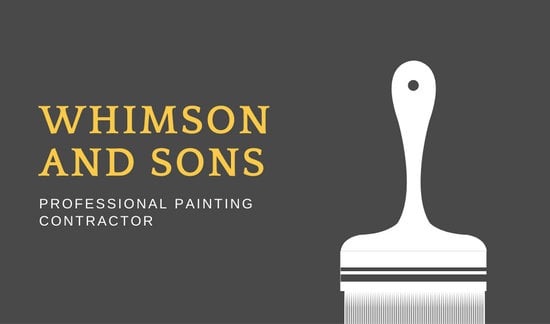Seasonal Factors To Consider For Business Exterior Painting: What You Need To Know
Seasonal Factors To Consider For Business Exterior Painting: What You Need To Know
Blog Article
Article Developed By-Ford Bagger
When you're preparing an industrial external paint job, seasonal variables can make or damage your outcomes. You'll wish to think about just how temperature level and humidity impact paint application and drying times. Selecting the best season can ensure your paint sticks properly and lasts much longer. But which periods are absolutely the most effective for this sort of work? Let' house of color minnetonka out the key elements that can affect your project's success.
The Effect of Temperature on Paint Application
When you're planning a commercial external painting project, the temperature level can dramatically affect how well the paint sticks and dries.
Ideally, you intend to paint when temperatures range between 50 ° F and 85 ° F. If it's also chilly, the paint might not cure correctly, causing issues like peeling or cracking.
On the flip side, if it's also hot, the paint can dry out too swiftly, preventing correct adhesion and leading to an uneven surface.
You must also take into consideration the time of day; early morning or late afternoon provides cooler temperature levels, which can be extra favorable.
Constantly check the manufacturer's recommendations for the certain paint you're using, as they commonly give advice on the suitable temperature level array for optimum results.
Humidity and Its Effect on Drying Times
Temperature isn't the only environmental element that affects your commercial exterior paint project; moisture plays a considerable duty as well. High humidity degrees can decrease drying times significantly, impacting the overall quality of your paint work.
When the air is saturated with dampness, the paint takes longer to heal, which can bring about problems like poor attachment and a higher threat of mildew development. If you're painting on a particularly damp day, be gotten ready for extended wait times in between layers.
It's essential to keep track of neighborhood weather conditions and plan as necessary. Ideally, go for just click the next website page in between 40% and 70% for optimal drying.
Keeping these factors in mind guarantees your task stays on track and supplies a long lasting coating.
Best Seasons for Commercial Outside Paint Projects
What's the most effective time of year for your business external painting tasks?
Spring and very early autumn are commonly your best options. During these periods, temperature levels are light, and moisture degrees are typically reduced, producing ideal conditions for paint application and drying out.
go to this website , which can trigger paint to completely dry as well quickly, resulting in inadequate adhesion and coating. Likewise, winter season's cold temperature levels can prevent appropriate drying and curing, risking the durability of your paint work.
Go for days with temperature levels between 50 ° F and 85 ° F for optimal results. Remember to examine the local weather prediction for rain, as damp conditions can destroy your job.
Planning around just click the following webpage ensures your paint project runs efficiently and lasts much longer.
Verdict
To conclude, intending your commercial outside painting projects around seasonal factors to consider can make a substantial difference in the result. By scheduling work during the ideal temperatures and humidity levels, you'll ensure much better bond and drying out times. Bear in mind to keep an eye on neighborhood weather prediction and select the right time of year-- spring and early fall are your best options. Taking these steps will help you attain a resilient and professional coating that lasts.
